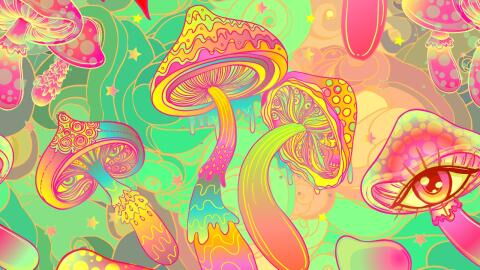Although catatonia was was distinguished as a separate mental disorder, experts now refer to it as a subcategory for a variety of specific psychotic and mood disorders. Catatonia is characterized by significant psychomotor disruption and can occur in the context of various disorders, particularly bipolar and mood disorders such as depression. Catatonia has also been heavily linked to schizophrenia.
Discover our latest podcast
There are three main types of catatonia: catatonia that is linked to another mental disorder, catatonia linked to another general medical condition and undetermined catatonia. Catatonia is not uncommon since it affects about 10% of patients hospitalized in psychiatric hospitals. It can occur in both children and adults.
SYMPTOMS
Catatonia is often acute and is characterized by various motor symptoms such as:
- Mutism (inability, unwillingness or refusal to speak)
- Negativism (opposition or lack of response to external stimuli)
- Absence of psychomotor activity and interaction
- Catalepsy (maintenance of imposed postures, rigidity of the body)
- Adoption of a spontaneous posture
- Grimaces
- Repetitive behaviours
- Automatic obedience
- Echolalia (repetition of other's words)
- Echopraxia (repetition of other's movements)
- Sudden agitation without external cause
CAUSES
The causes of catatonia remain relatively unknown, but mood disorders, schizophrenia and post-traumatic shock can all lead to a catatonic state. The origin of the symptoms can also come from a disruption of the frontal brain circuits, encephalitis, brain tumour, epilepsy, head traumaor a cerebrovascular accident (CVA). Certain recreational drugs such as ecstasy or amphetamines can also, in rare cases, plunge the consumer into a catatonic state.
A severe lack of vitamin B12, exposure to toxins and infection has also been linked to symptoms of catatonia. A general medical patient who displays typical associated symptoms may still be considered catatonic in cases where the condition is idiopathic, meaning that the cause of the condition is spontaneous or unknown.
TREATMENT
Doctors are currently unclear of the link between catatonia and other general medical conditions. Because catatonia is often accompanied by an underlying condition, its diagnosis can be complicated and the condition often goes unidentified. Once a patient shows catatonic tendencies, a doctor will usually focus on the root of the cause (such as an associated mental condition or trauma) in order to deal with the condition successfully.
Catatonia is treated first with benzodiazepines. If it is set up quickly, the treatment is safe and effective and leads to remission in 70 to 80% of cases. When the patient's condition does not improve, electroconvulsive therapy (electroshock method) may be considered. Once identified, the condition tends to respond to standard treatment.















